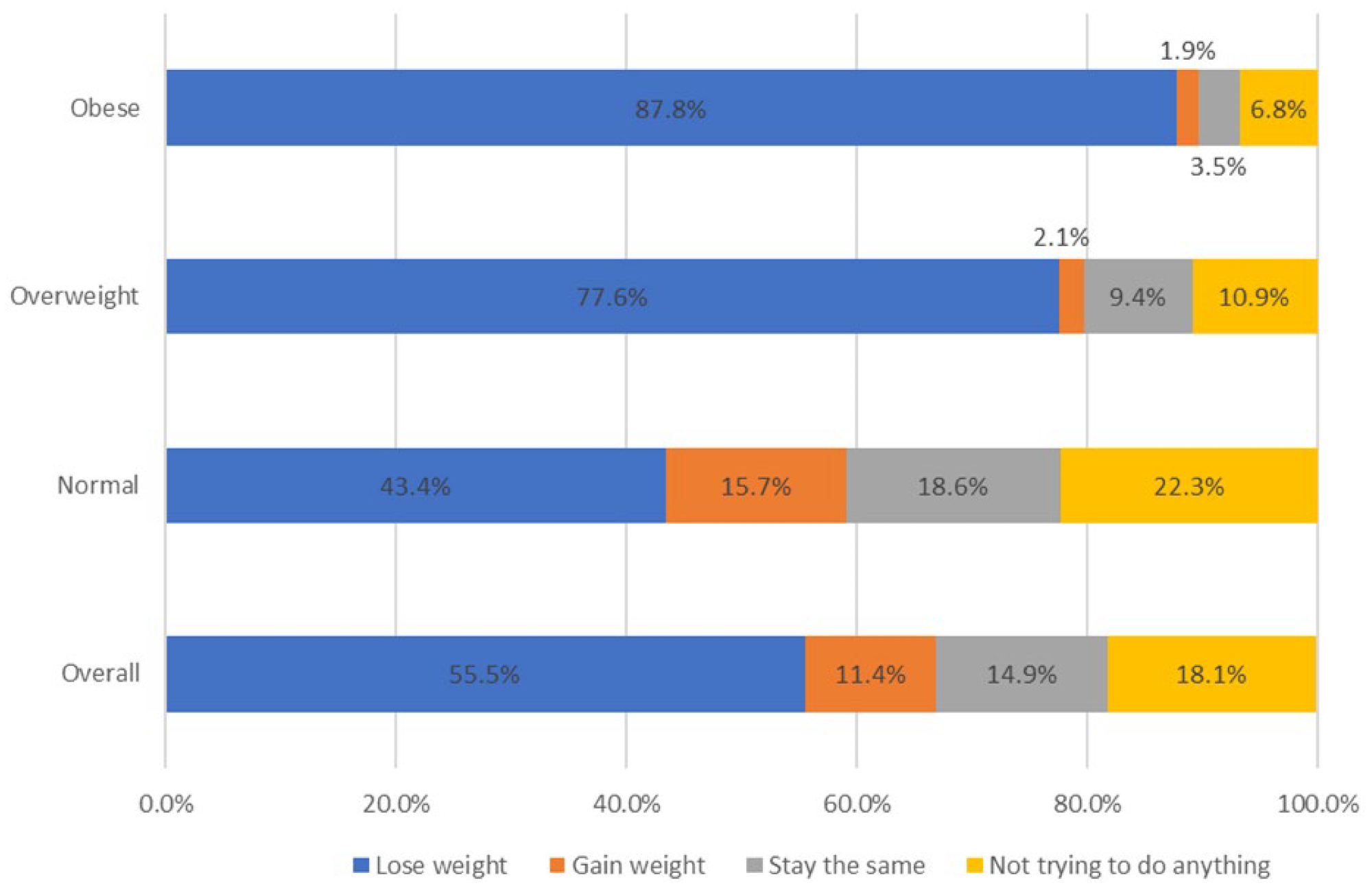Despite national guidelines, most American teen girls chase weight loss, often at the expense of healthier habits. New research shows that intent to slim down doesn’t always align with health, underscoring the urgent need for supportive interventions.
 Study: Lifestyle Behaviors Associated with Weight Loss Intent in Adolescent Girls: Findings from the US 2021 National Youth Risk Behavior Survey. Image Credit: Antonio Guillem / Shutterstock
Study: Lifestyle Behaviors Associated with Weight Loss Intent in Adolescent Girls: Findings from the US 2021 National Youth Risk Behavior Survey. Image Credit: Antonio Guillem / Shutterstock
In a recent study published in the journal Nutrients, researchers at Worcester State University, USA, investigated the lifestyle behaviors associated with weight loss intent in adolescent girls using nationally representative data.
Background
Obesity affects over 22% of adolescents aged 12 to 19 in the United States (US), with long-term risks such as type 2 diabetes and cardiovascular disease. Girls, more than boys, often experience body dissatisfaction, which can drive weight loss attempts. Social media, peer pressure, and family environments significantly influence young girls’ perceptions of ideal body weight. Despite existing physical activity and dietary guidelines, adherence remains low among adolescents, especially girls. Simultaneously, behaviors like skipping breakfast, insufficient sleep, vaping, and alcohol use are rising. A better understanding of these lifestyle patterns is critical. Further research is needed to clarify causal relationships.
About the study
The present study used data from the 2021 Youth Risk Behavior Surveillance System, a cross-sectional survey administered by the Centers for Disease Control and Prevention to assess health behaviors in US high school students. Researchers extracted data from 4,362 female students in grades 9 through 12 who responded to the question about weight loss intent. Participants were classified into two groups: those trying to lose weight and those not trying.
Variables included dietary habits (e.g., breakfast, fruit, and vegetable intake), physical activity (e.g., strength training, aerobic activity), screen time, sleep duration, alcohol use, and vaping. The Body Mass Index (BMI) percentile was calculated using the Centers for Disease Control and Prevention growth charts based on self-reported weight and height. Based on the discrepancy between actual BMI and self-view, weight perception was categorized as accurate, underestimated, or overestimated.
Logistic regression analysis was performed using Statistical Package for the Social Sciences (SPSS) Version 29, adjusting for grade level, race/ethnicity, BMI percentile, and other covariates. Models were stratified by body image perception to examine subgroup differences. The model demonstrated good discrimination between groups, with an area under the curve value of 0.78.
Study results
Among the adolescent girls surveyed, the weighted estimate was 55.5% reported trying to lose weight. Girls who intended to lose weight had a higher average BMI percentile (75.4) compared to those not trying to lose weight (50.1). However, 43.4% of girls in the normal weight category also reported a desire to lose weight, indicating widespread body image dissatisfaction. Additionally, among girls with a normal BMI, 16% were trying to gain weight, reflecting further complexity in body image concerns. Notably, the highest overall intent to lose weight was observed among Hispanic girls (66.3%) and multiple Hispanic descent (59.9%). Among normal-weight girls, weight loss intent was particularly prevalent among white (47.5%) and Asian (45.7%) girls.
 Proportion of adolescent girls reporting weight loss intent by BMI percentile categories (Normal Weight, Overweight, Obese) in the 2021 YRBS Survey: BMI, Body Mass Index. Normal weight BMI% < 85, overweight BMI% 85–<95, obese BMI% ≥ 95.
Proportion of adolescent girls reporting weight loss intent by BMI percentile categories (Normal Weight, Overweight, Obese) in the 2021 YRBS Survey: BMI, Body Mass Index. Normal weight BMI% < 85, overweight BMI% 85–<95, obese BMI% ≥ 95.
Lifestyle behaviors varied significantly between groups. Girls trying to lose weight were more likely to engage in muscle-strengthening activities (odds ratio [OR] 1.30; 95% confidence interval [CI] 1.07-1.57) and report more than three hours of daily screen time (OR 1.27; 95% CI 1.02-1.58). They were also more likely to have consumed alcohol (OR 1.61; 95% CI 1.32-1.98) and used electronic vapor products (OR 1.22; 95% CI 1.01-1.47) in the previous month.
Conversely, healthier habits were less common in this group. They were significantly less likely to eat breakfast daily (OR 0.52; 95% CI 0.40-0.69), get at least 8 hours of sleep per night (OR 0.72; 95% CI 0.59-0.89), or consume ‘other vegetables’ (excluding salads, carrots, and potatoes) (OR 0.78; 95% CI 0.67-0.90). There was no significant difference in the frequency of consuming fruits, milk, or soda.
While muscle-strengthening exercises were more common among girls intending to lose weight (but not overall aerobic or total physical activity), there was no difference in meeting the national recommendation for 60 minutes of physical activity daily. The link between weight loss intent and muscle-building activity may reflect an attempt to lose weight rather than focusing on overall health.
Importantly, the study discusses the possibility of a bidirectional relationship between screen time and weight loss intent. Girls trying to lose weight slept less and used screens more, both of which can contribute to weight gain and mental health challenges. Extended screen time is known to influence self-esteem and body dissatisfaction, especially among adolescent girls, reinforcing a cycle of negative self-image and unhealthy behaviors.
The desire to lose weight was most common among obese girls (87.8%), but was notably high among girls in the normal weight range as well. These findings suggest that weight loss intent is not always aligned with actual weight status and may reflect unrealistic body standards.
Conclusions
To summarize, this study shows that adolescent girls trying to lose weight often engage in unhealthy behaviors such as skipping breakfast, inadequate sleep, excessive screen time, alcohol use, and vaping. These habits may not support long-term weight management or overall well-being. Moreover, a significant portion of girls with a normal BMI still express weight loss intent, highlighting concerns about distorted body image. Notably, the cross-sectional design means causality cannot be determined, but the associations suggest important targets for intervention. Interventions should focus on promoting healthy behaviors over weight fixation, integrating strategies like sleep hygiene, reducing screen exposure, addressing unrealistic body standards, and improving body image perceptions. Tailored, school-based programs and parental guidance can play key roles in supporting adolescent girls’ health goals.
Journal reference:
- Fondell E, Vallejos J, Piazza AJ, Calle MC. Lifestyle Behaviors Associated with Weight Loss Intent in Adolescent Girls: Findings from the 2021 US National Youth Risk Behavior Survey. Nutrients. 2025; 17(10):1676, DOI: 10.3390/nu17101676, https://www.mdpi.com/2072-6643/17/10/1676